Eurozone PMI manufacturing rose to 55.1 in July, up from 54.9 and beat expectation of 54.6. However, PMI services dropped to 54.4, down form 55.2 and missed expectation of 55.1. PMI composite dropped to 54.3, down from 54.9 and hit a 2-month low.
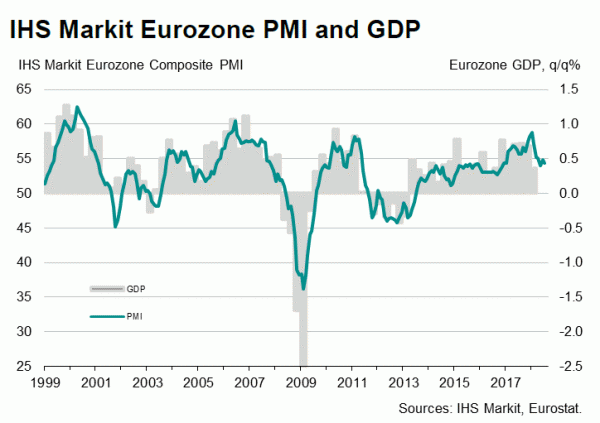
Commenting on the flash PMI data, Chris Williamson, Chief Business Economist at IHS Markit said:
“The flash PMI suggests the eurozone started the second half of the year on a relatively soft footing, indicative of GDP growth slowing in the third quarter. The July reading is consistent with quarterly GDP growth of 0.4%, down from a 0.5% expansion indicated by the surveys for the second quarter.
“The renewed slowdown comes as a disappointment, confirming suspicions that June’s rebound was temporary, largely due to businesses in some countries making up for an unusually high number of public holidays in May.
“Given the waning growth of new business and further slide in business optimism, the outlook has also deteriorated, notably in manufacturing, where the surveys saw worries about trade wars intensify markedly in July.
“While there are signs that improving domestic demand in many countries is helping drive robust service sector expansion and support manufacturing, a worsening picture for export growth is clearly having an increasingly detrimental effect on manufacturing.
“The big question going forward will be the extent to which domestic demand can remain sufficiently resilient to cushion the eurozone economy from the potential adverse impact of an escalating trade war on exports. For now, the health of domestic demand seems encouragingly solid, but any feedthrough of trade worries to other sectors will be a key area of concern to an already cloudier-looking outlook.”
Full release here.




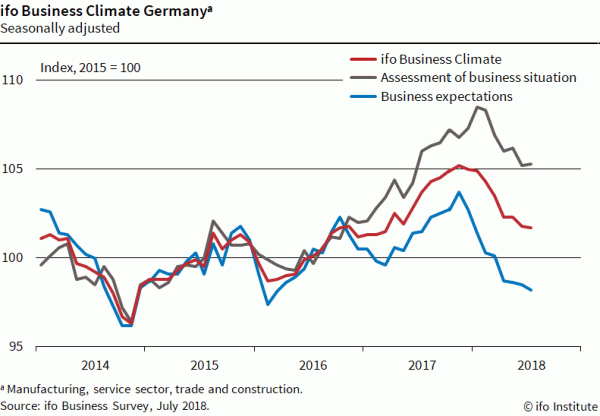
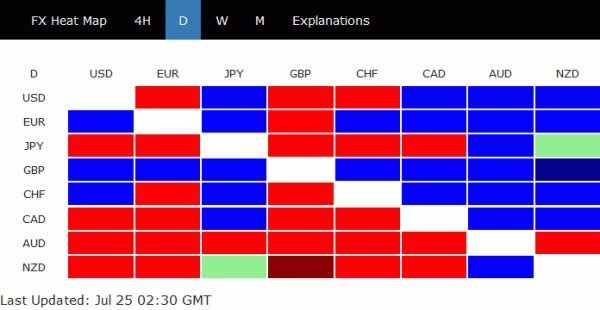
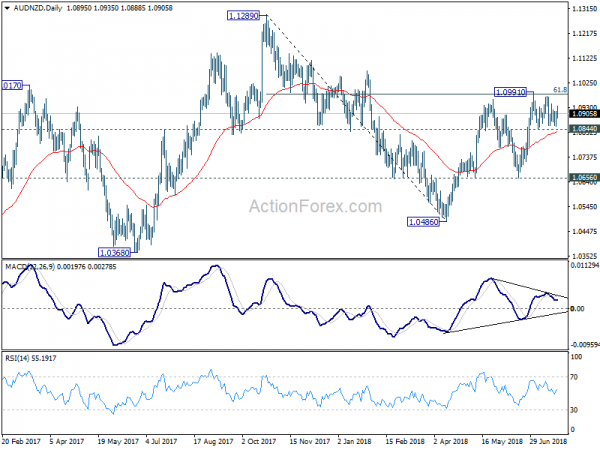
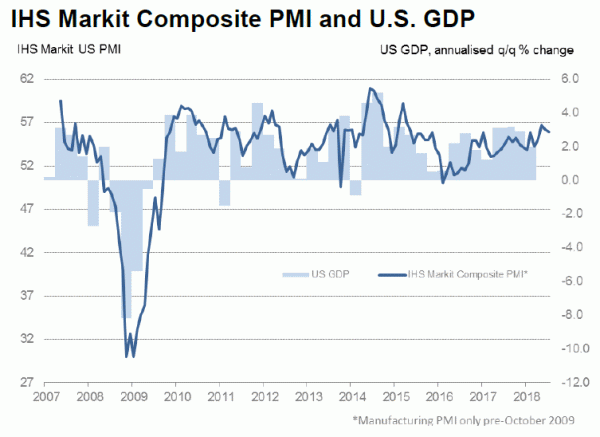
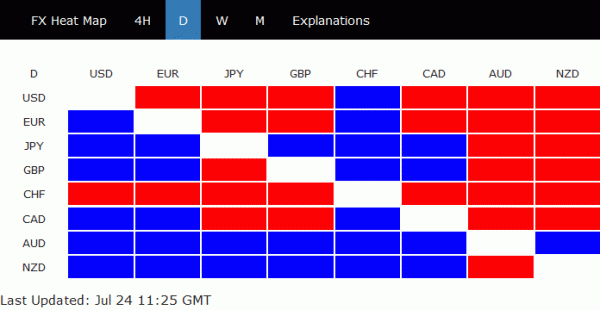
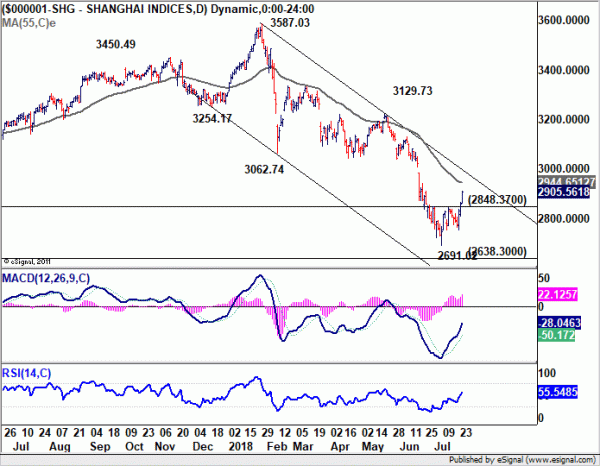
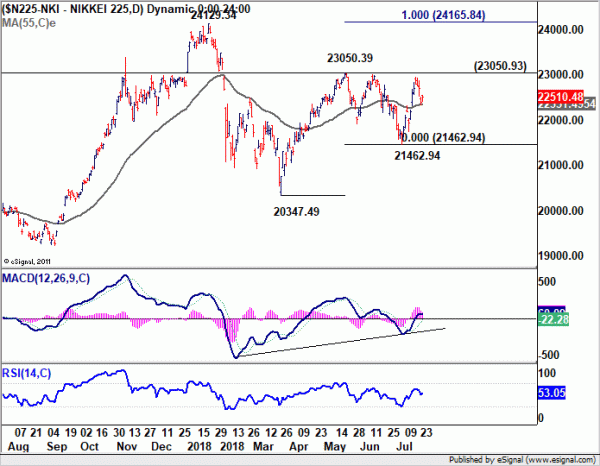

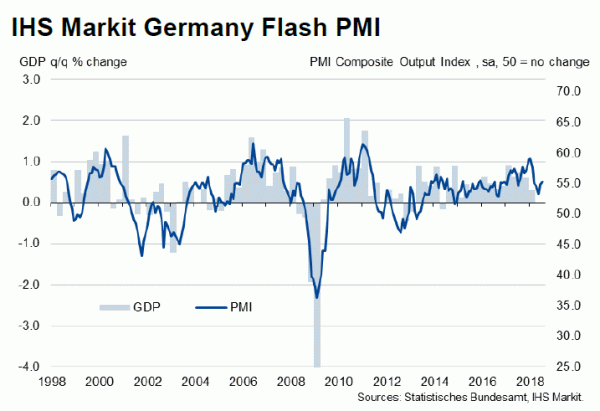
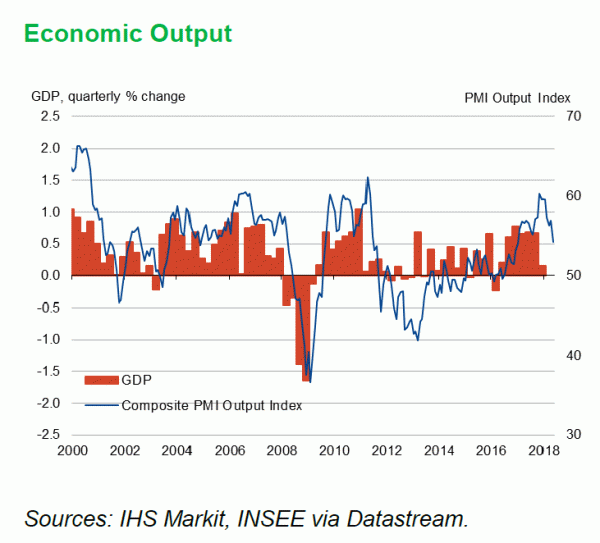
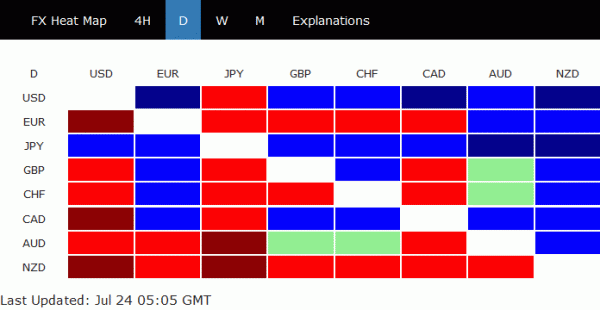
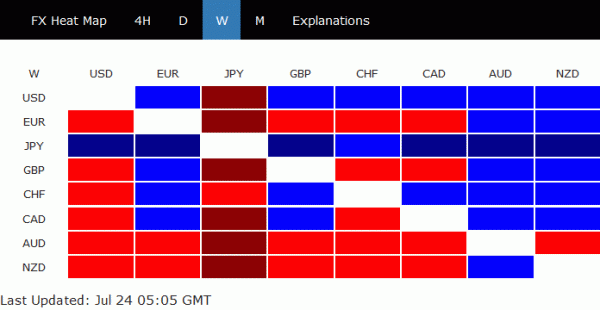
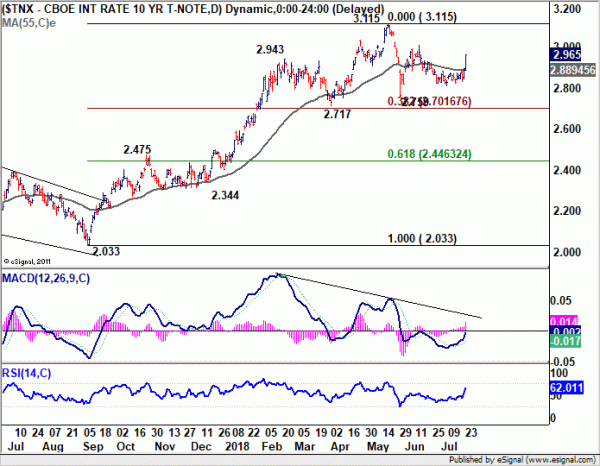
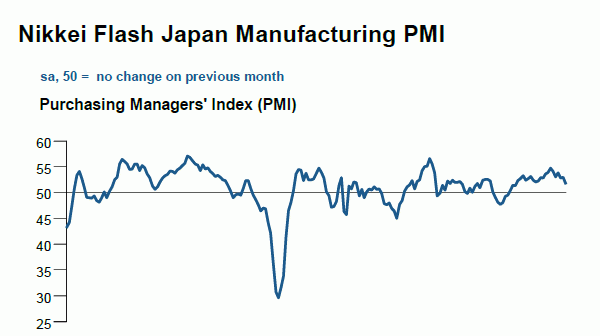
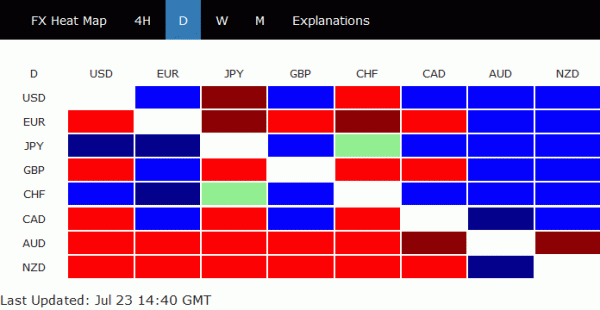
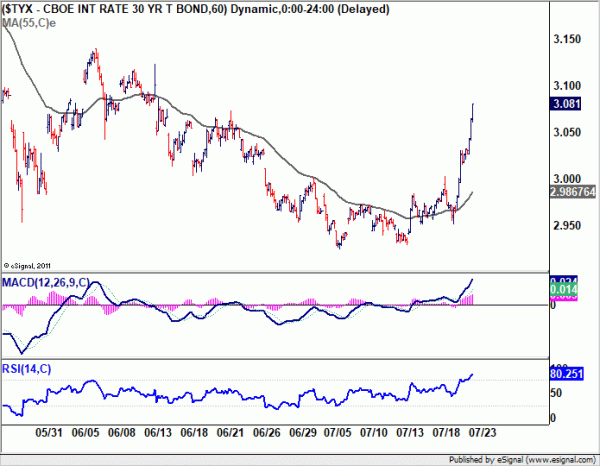
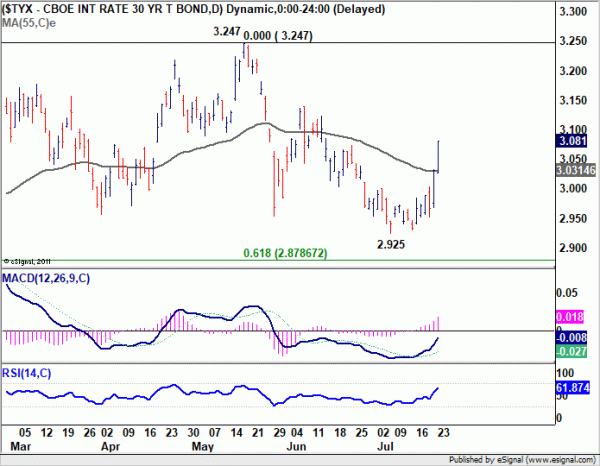
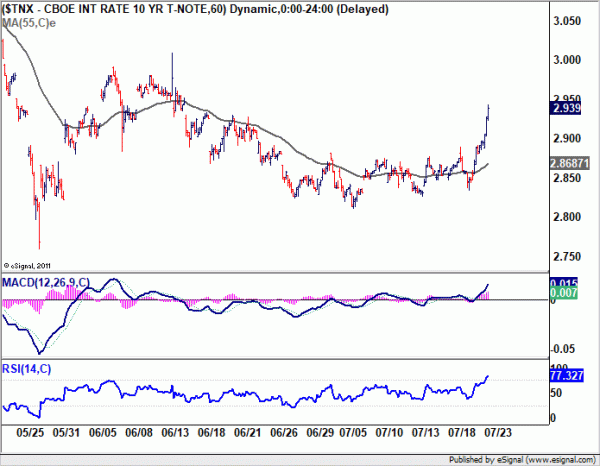
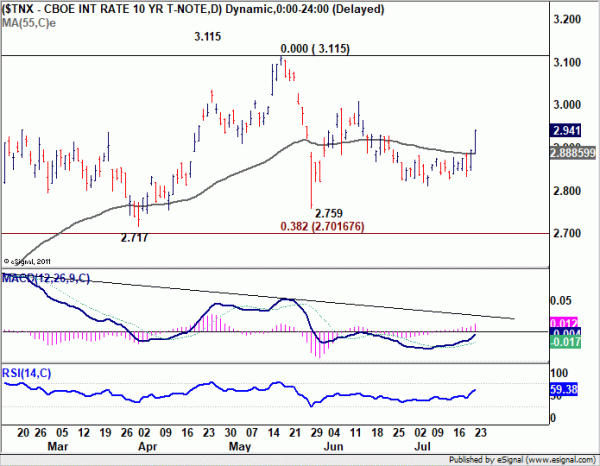

Into US session: Euro and Dollar both weak ahead of Juncker-Trump meeting
Entering into US session, Australian dollar remains the weakest one for today, as continues to be weighed down by CPI miss. Dollar and Euro are trading as the second and the third weakest one. Markets are having their eyes on the meeting between Trump and European Commission President Jean-Claude Juncker today. But it’s unlikely for the “master of deal” and the “brutal killer” to achieve anything of significance. Meanwhile, Canadian Dollar and Swiss Franc are the strongest two today.
For the week, Yen remains on the strongest one so far. 10 year JGB drops slightly to 0.070 today, below this week’s high at 0.090. But it’s still way higher than last week’s high at 0.49. Sterling is trading as the second strongest one as traders were happy with UK PM Theresa May’s take over of Brexit negotiation. Euro is the weakest one followed by Australian Dollar.